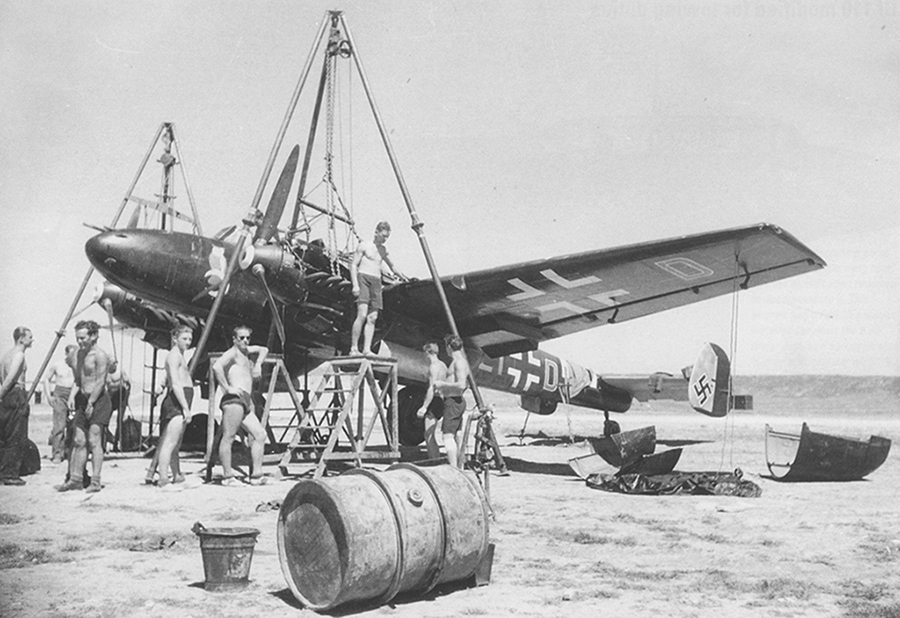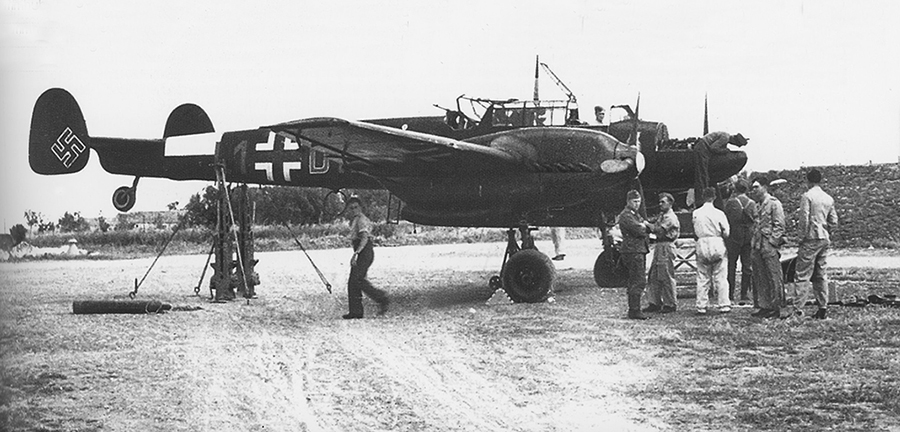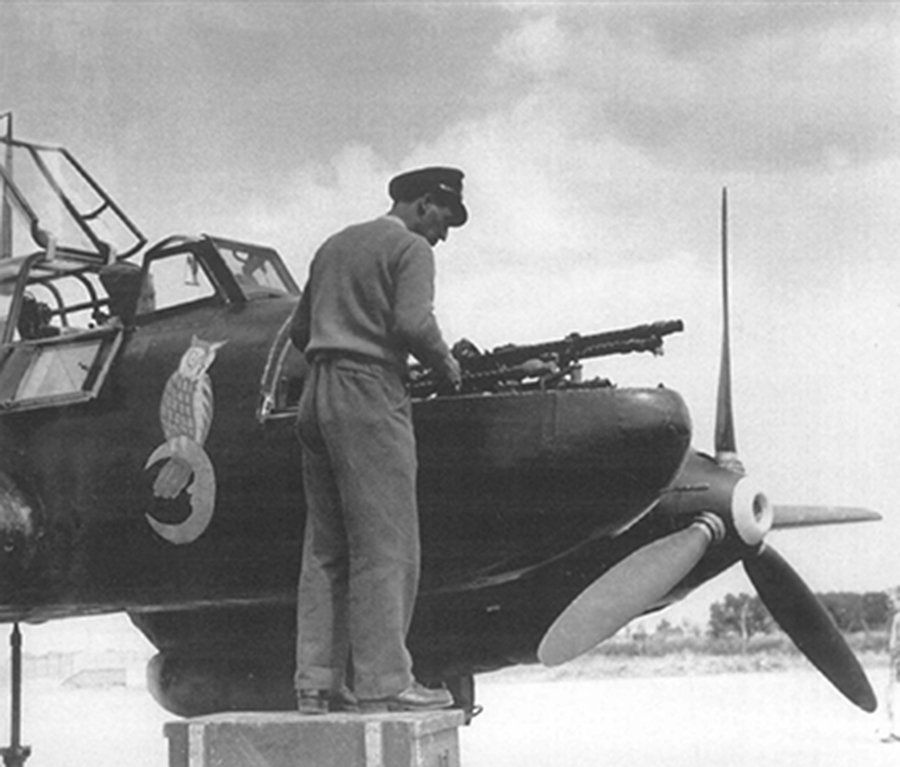
After unsustainable losses during the Battle of Britain in August and September 1940, the outmatched Bf 110 was reassigned to other duties and theaters of operation. Accordingly, V(Z)/LG 1 (Gruppe V, a Zerstörer unit of Lehrgeschwader 1, which was a demonstration or training squadron) was disbanded and, in June 1941, re-designated as 1./NJG 3, Nachtjagdgeschwader 3, a night-fighter unit (the unit code of which was D5).
This photograph shows a Bf 110C-4 being repaired on an airfield at Benghazi in May 1941. German aircraft in the Mediterranean theater typically had a white band around the rear fuselage as a recognition marker. But here, it extends only over the top half to provide some recognition in the air—and to lessen detection from the ground. The white undercarriage door, tailfins and tailplane that seem so incongruous on a night fighter actually are replacement parts that have not yet been repainted.
The plane is coded L1+DH, "L1" designating that it belonged to Nachtjagdgeschwader 3 and "H" that it was assigned to 1 Staffel, I Gruppe. The individual aircraft letter "D" was outlined in white, the color of the Staffel (Merrick et al. understand the outline to be yellow), and repeated on the the underside of the wingtips (and presumably on the upper side as well, as photographs of L1+CH show). According to regulation, all the letters were painted in RLM 77 gray and the plane itself in black, a color scheme that came into use that year.

In this picture, the replacement parts have been painted (or possibly not yet fitted), and the forward machine guns are being synchronized.

The Staffel badge, a blue owl perched on a yellow crescent moon, originated with the formation of 1./NJG. One can see that the propellers are not black but RLM 70 black green, as were the spinner hubs tipped in white, the Staffel color. The plane, itself, was painted overall with a permanent black aviation lacquer originally used for the Balkenkreuz and Hakenkreuz (swastika) that had a very smooth finish (to reduce drag) and a slight sheen.


Vasco and Estanislau profile the plane with its tail components still unpainted and, in these screenshots, this is how the plane is flown—vulnerable, to be sure, but the images are more dramatic than a black plane flying at night.
References: Messerschmitt Bf 110 C, D and E: An Illustrated Study (2008) by John Vasco and Fernando Estanislau (p. 149); Messerschmitt's Twin-Engined Fighters from 1939 to 1945 (2009) by Dominique Breffort and André Jouineau (pp. 19, 49); Nachtjäger: Luftwaffe Night Fighter Units, 1939-1943, Vol. I (2005) by David P. Williams (pp. 35-38); Zerstörer Gruppe: A History of V./(Z)LG 1-I./NJG 3, 1939-1941 (2004) by Ludwig von Eimannsberger; The Messerschmitt Bf 110 in Color Profile, 1939-1945 (2004) by John Vasco and Fernando Estanislau (p. 103); Luftwaffe Codes, Markings & Units 1939-1945 (1995) by Barry C. Rosch (p. 39); Luftwaffe Camouflage and Markings 1935-1945: Photo Archive 1 (2007) by K. A. Merrick, Eddie J. Creek, and Brett Green (p. 45); Messerschmitt Bf 110 (2000) by Ron Mackay (pp. 80-81); Real Colors of WWII Aircraft (2019) by Maciej Góralczyk, Gerald T. Högl, Jürgen Kiroff, et al. (p. 54).